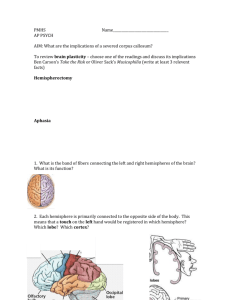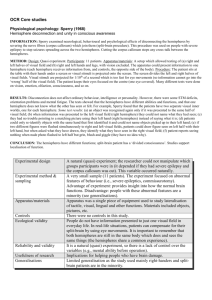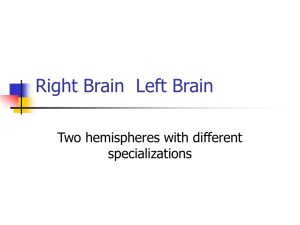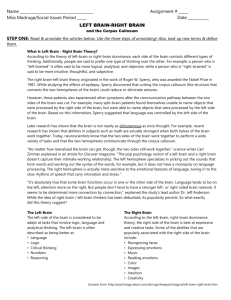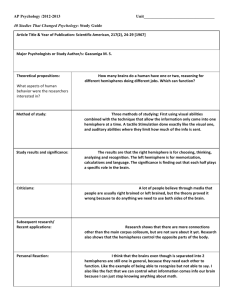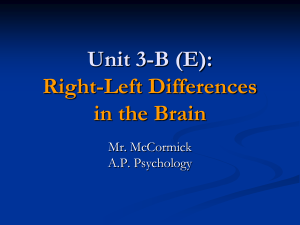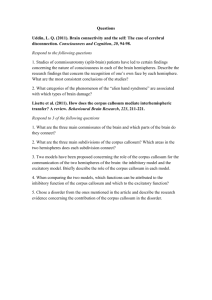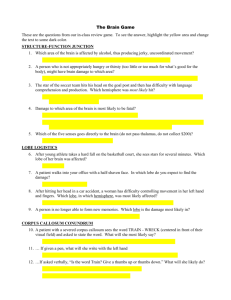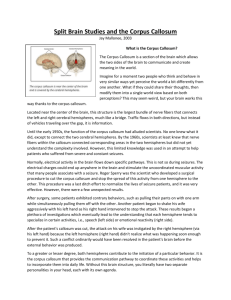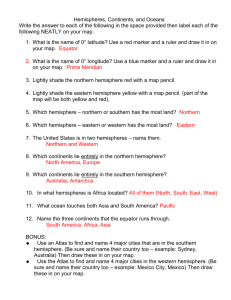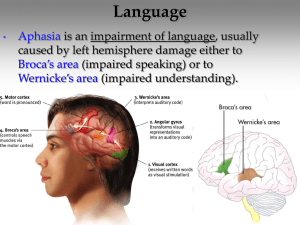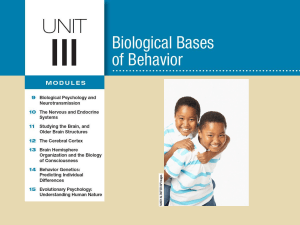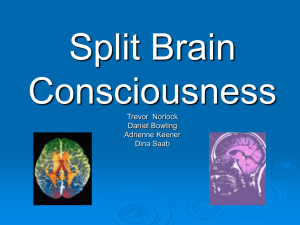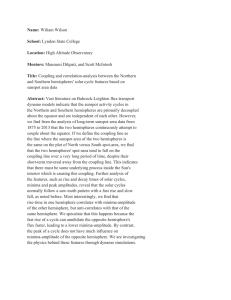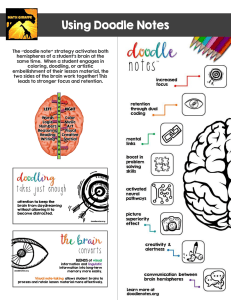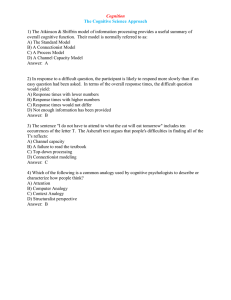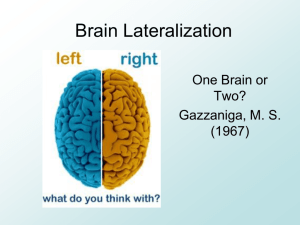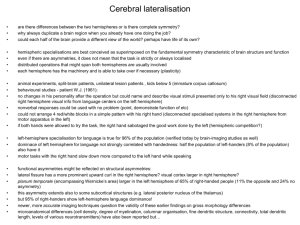Split Brain Reading
advertisement
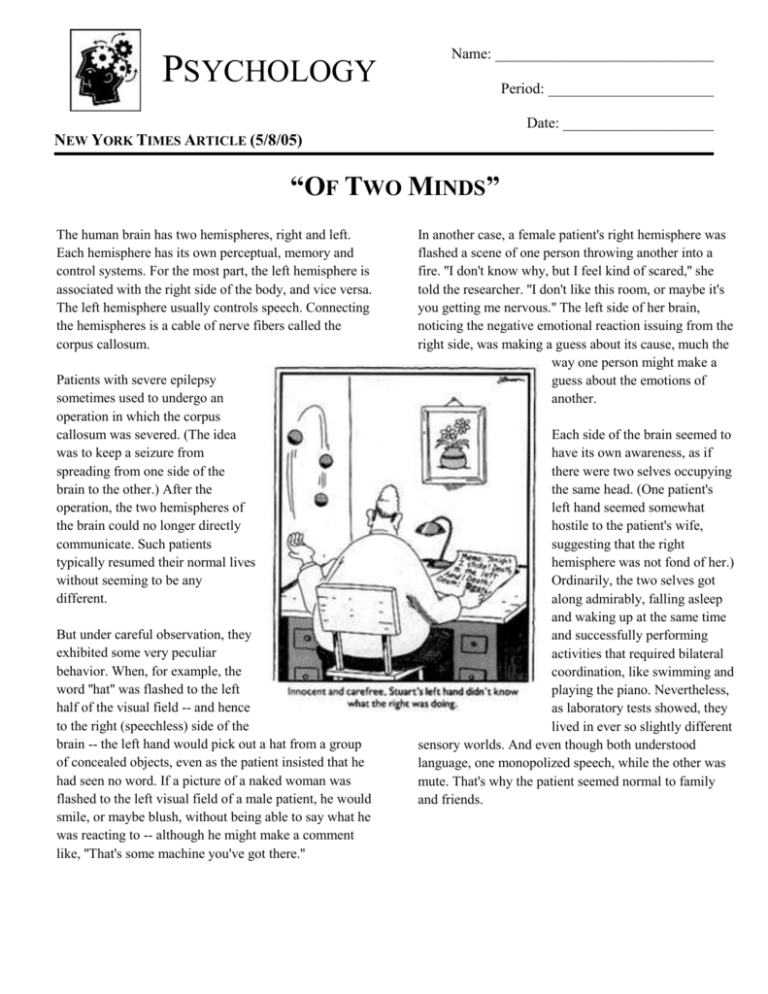
PSYCHOLOGY Name: _____________________________ Period: ______________________ Date: ____________________ NEW YORK TIMES ARTICLE (5/8/05) “OF TWO MINDS” The human brain has two hemispheres, right and left. Each hemisphere has its own perceptual, memory and control systems. For the most part, the left hemisphere is associated with the right side of the body, and vice versa. The left hemisphere usually controls speech. Connecting the hemispheres is a cable of nerve fibers called the corpus callosum. Patients with severe epilepsy sometimes used to undergo an operation in which the corpus callosum was severed. (The idea was to keep a seizure from spreading from one side of the brain to the other.) After the operation, the two hemispheres of the brain could no longer directly communicate. Such patients typically resumed their normal lives without seeming to be any different. But under careful observation, they exhibited some very peculiar behavior. When, for example, the word ''hat'' was flashed to the left half of the visual field -- and hence to the right (speechless) side of the brain -- the left hand would pick out a hat from a group of concealed objects, even as the patient insisted that he had seen no word. If a picture of a naked woman was flashed to the left visual field of a male patient, he would smile, or maybe blush, without being able to say what he was reacting to -- although he might make a comment like, ''That's some machine you've got there.'' In another case, a female patient's right hemisphere was flashed a scene of one person throwing another into a fire. ''I don't know why, but I feel kind of scared,'' she told the researcher. ''I don't like this room, or maybe it's you getting me nervous.'' The left side of her brain, noticing the negative emotional reaction issuing from the right side, was making a guess about its cause, much the way one person might make a guess about the emotions of another. Each side of the brain seemed to have its own awareness, as if there were two selves occupying the same head. (One patient's left hand seemed somewhat hostile to the patient's wife, suggesting that the right hemisphere was not fond of her.) Ordinarily, the two selves got along admirably, falling asleep and waking up at the same time and successfully performing activities that required bilateral coordination, like swimming and playing the piano. Nevertheless, as laboratory tests showed, they lived in ever so slightly different sensory worlds. And even though both understood language, one monopolized speech, while the other was mute. That's why the patient seemed normal to family and friends. QUESTIONS 1. What is the corpus callosum? (What does it do?) ____________________________________________________ ___________________________________________________________________________________________ 2. It was sometimes cut in the past to help people with what problem? ______________________________ _______ 3. Which side of the brain is responsible for speech in most people? ______________________________ _______ 4. How is the cartoon similar to the story about the patient mentioned in the last paragraph?
